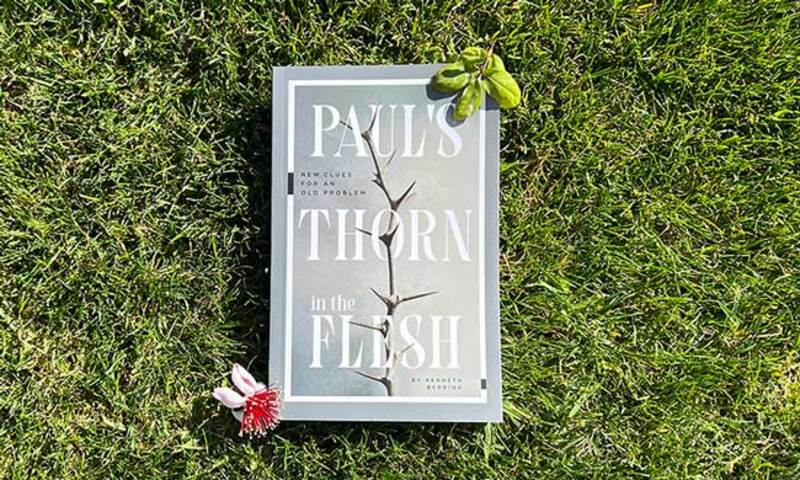Biola University’s Dr. Kenneth Berding uncovers what Paul’s infamous ailment in 2 Corinthians 12:7 could be in his new book, Paul’s Thorn in the Flesh: New Clues for an Old Problem. The Talbot School of Theology professor and author approached the mystery like a puzzle.
“I first noticed that modern scholars had for the most part despaired of making any serious progress on this famous historical puzzle,” Berding said.
After thinking about Paul’s problem for 20 years, Berding set out to investigate it for himself. The entire process started in one of his topical studies on the book of 2 Corinthians.
“I kept encountering relevant exegetical clues regarding Paul’s thorn in the flesh that led to other clues, and then led to other clues,” Berding said. “I just kept making a note of them whenever I observed them.”
As he worked through the problem of Paul’s thorn in the flesh, he avoided commentaries due to recent commentators having skepticism on solving the mystery. The amount of clues that Berding found led him to write the book. According to Berding, most people who have commented on this mystery identify at most three to four criteria for what his ailment could be.
“I came across 20 criteria during my study, which together substantially narrowed the possibilities of what Paul’s thorn in the flesh could have been,” he said.
After personally experiencing facial pain due to shingles and post-herpetic neuralgia on one side of his face and then trigeminal neuralgia on the other side, Berding started to ask if there was evidence pointing toward cranial-facial conditions. In his study, he found there was such evidence.
Late second-century church fathers, Irenaeus and Tertullian, both thought that Paul’s ailment was physical with Tertullian specifically claiming that it was a pain of the head or ear.
“I also noticed that there is more facial language in 2 Corinthians than in all of Paul’s other letters combined,” Berding said. “The Greek verb kolaphizō in 2 Corinthians 12:7 usually means to 'punch in the face,’ not simply to ‘torment’ or ‘beat,’ as most of our translations render that crucial Greek verb.”
Additionally, there were many intertextual clues linking 2 Corinthians 12 with the book of Job, especially Job 1-2.
“[This] suggests that Paul’s painful suffering, like Job’s, was an ailment of the literal skin and flesh,” Berding said.
He said that 2 Corinthians 12:7 speaks most powerfully to those who struggle with chronic pain. It also helps to explain the relationship between God’s permission and attacks of evil spirits.
“In one sense, it isn’t that important to know specifically what Paul’s thorn in the flesh was,” he said. “If, however, we can narrow down to something more specific — or at least to a narrower category of possibilities, as I have done — there are numerous payoffs to our understanding of Paul and his mission.”
Throughout his book, Berding hopes that readers will learn from his model of how to do a deep exegetical study that focuses on literary contexts, historical and cultural backgrounds, intertextual reverberations, insights from the early church and connections to the contemporary world.
“I also hope that people who struggle with chronic pain will come to know the two most important spiritual lessons God wanted Paul to get from his pain: first, to not get puffed up, and second, to lean into the truth that God’s power is made perfect in weakness,” he said.
As for his students, he aims to present this information as part of his curriculum for his biblical and theological integration class, Life and Letters of Paul. In the class, he spends a significant portion of time talking about the theme of suffering.
“The most important sections dealing with suffering in 2 Corinthians are chapters 1, 4-5, and 11-12, the last of which culminates in Paul writing about his thorn in the flesh,” Berding said. “When we observe how Paul suffered, we learn much better how to deal with suffering when it intersects with our lives.”
The book is available for purchase at Amazon.
Written by Charlotte McKinley, public relations intern. For more information, please email media.relations@biola.edu.
 Biola University
Biola University

.jpg)
.jpg)

_(1).jpg)